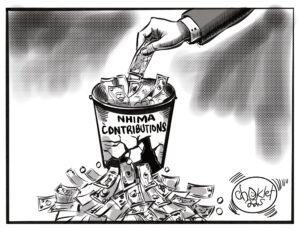In this feature, I argue that general trends of resilience in the agricultural sector particularly at a micro-scale show more could be achieved with the sector. Strategic planning underpinned by the long term could help to unlock and harness the sector’s potential. The Government of the Republic of Zambia identified agriculture as a key priority sector in not only poverty reduction and economic diversification but also in driving pandemic recovery. Recent estimates show that over 70% of the population in Zambia derive their livelihoods from agriculture. The COVD-19 pandemic has placed a spotlight on this feature. Throughout the COVID-19 pandemic period, agriculture has been a source of own food for most Zambians, with food commodity spikes in prices forcing trade exchanges with locally produced foods. Trade exchanges for food provision within rural areas and between rural and urban areas amidst lockdowns in import source countries such as South Africa mean that agriculture can be relied upon as a source of growth as well as nutritional food provisioning. The sector can also play a part in the delivery of effective forms of pandemic recovery.
The 2019/2020 agricultural season recorded a substantial increase in the production of crops, including staple maize. National Crop Statistics provides evidence that the 2020/21 crop forecast shows there has been a 7% increase in total production to 3,620,240 MT of maize. There has also been production growth in sorghum (9%), rice (23%), and millet (2%). This includes groundnuts (8%), cotton (60%), and mixed beans (13%). Meanwhile, cowpeas recorded a 65% increase in production with sweet potatoes standing at 20%. One of the key aspects is that Cereal Balance Sheets show a favourable national food security position considering maize, paddy rice, cassava, wheat, sorghum, and Irish potatoes. Whether patterns have been favourable but policy responses through initiatives such as the Fertiliser Inputs Support Program including government promotion of agro-processing have contributed. Combined with strategic policy thinking, more could be done to build specific value chains that enhance possibilities for employment creation and sector diversification.
Records from the Department of Agribusiness and Marketing show that commodity prices have in some cases been increasing but more could be done to reflect more market fundamentals. Maize for instance fetched K191.50 per 50kg bag in January before dropping to K155 in June 2021. Soybeans show a similar trend, starting on K6.50 per kilogram in January and bouncing to K11.50 by June 2021. A focus on these price dynamics is in no way to conceal existing structural issues facing agriculture. Rather, the focus is aimed at highlighting particular issues as potential pointers for an enhanced effort on agriculture. A policy framework somewhat already exist that can help to actualise some of the objectives. The Second National Agricultural Policy has a vision of “an efficient, competitive, and sustainable agricultural sector, which assures food and nutrition security, increased employment opportunities and incomes.” To achieve this vision, the policy points to enhancing production and productivity, development of efficient markets and value chains, access to finance and sustainable natural resource management, research and development and enhancing food and nutritional security. The Seventh National Development Plan (7thNDP) is another key policy document whose focus is on creating “a diversified and export-oriented agricultural sector.” Similarly, the 7thNDP advances the need to enhance production and productivity, development of markets and value chains, access to credit, promotion of diversification and investments in agricultural infrastructure. Some of these include irrigation infrastructure. This policy context as well as existing realities show much could be achieved in and with the agricultural sector. For instance, the poultry value chain has built competitive conditions for poultry and animal feed in Zambia. In fact, over the years Zambia has developed an integrated poultry strategy. A long history of maize production and an emerging soy transition present the country with competitive conditions for poultry and animal feed. Applying this thinking across different related value chains can boost agriculture development.
I realise that it is important to disclaim that my effort in this feature is neither to dismiss current agricultural efforts nor downplay structural challenges facing the agricultural sector. Rather, I hope to encourage reflection on a particular issue – the role and importance of agriculture in promoting effective and sustainable forms of recovery as well as in driving socio-economic transformation. This includes the potential of the sector to drive businesses and livelihoods. I believe that appreciating these elements can potentially help to enhance the structure and implementation of different policy interventions, driving sectoral and multi-sectoral gains. By doing so, this feature helps to shed light on the theoretical and policy commitment to agriculture and implications for national and local development. And that is the point.
About the Author: Dr Simon Manda is a Senior Researcher at the Centre for Trade Policy and Development and he is also a Lecturer at the University of Zambia Department of Development Studies. Dr Manda is also a Non-Visiting Research Fellow with the Pan-African Scientific Research Council and a Visiting Researcher at Oregon State University, Bend, USA.
























